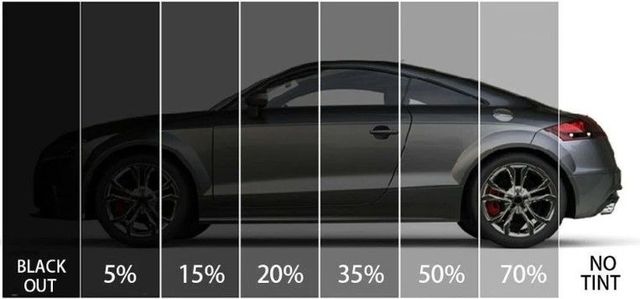Home Window Tinting Regulations and Standards: What You Need to Know Before Tinting Your Car
Before waging window tinting for your lorry, it is important to familiarize on your own with the diverse legislations and guidelines that control this practice throughout different states. These regulations determine the allowable levels of tint darkness, commonly measured by noticeable light transmission (VLT) percents, and consist of specific terms for front windshields focused on ensuring roadway security. Additionally, certain territories may use medical exemptions for individuals with certifying conditions. Comprehending these intricacies can conserve you from possible lawful implications, but what are the particular guidelines in your state?
Summary of Window Tinting Laws
Window tinting legislations are often based on variant across various territories, showing local guidelines and security considerations. These legislations determine the acceptable degrees of color darkness and reflectiveness on lorry home windows, making certain that drivers maintain appropriate presence while additionally shielding against unsafe UV rays and warm.
A lot of guidelines identify window tinting based on the Visible Light Transmission (VLT) percent, which shows the amount of light that can travel through the window. Generally, reduced VLT portions symbolize darker tints. Regulations commonly set apart in between the front, side, and rear home windows, with stricter restrictions put on the front windshield to improve safety and security for both the motorist and various other road customers.
Compliance with home window tinting guidelines is critical, as violations can result in penalties, obligatory elimination of the tint, and prospective increases in insurance coverage costs. It is vital for vehicle owners to acquaint themselves with regional laws prior to proceeding with home window tinting setups.
State-by-State Tint Rules
Comprehending the certain home window tinting guidelines in each state is vital for lorry proprietors seeking to abide with the legislation. Each state in the united state has actually developed its own set of policies governing home window tinting, which can differ dramatically. These guidelines often dictate the allowable levels of color darkness, the kinds of home windows that can be tinted, and any kind of medical exceptions that might use.
For instance, states like California have strict constraints on color darkness for front windows, while others, such as New Mexico, might allow darker colors. In addition, particular states mandate particular presence percents for various home windows, including the windscreen, front side windows, and back windows. It is critical for vehicle owners to familiarize themselves with their state's regulations to avoid possible fines or charges.
Moreover, some states might need a qualification sticker to be positioned on tinted windows, indicating compliance with state regulations. Failure to abide by these policies not only runs the risk of legal consequences yet can additionally impact safety and security and visibility while driving. Consequently, automobile proprietors need to perform comprehensive study or seek advice from regional authorities to make certain complete understanding and conformity with state-by-state color laws.
Allowed Color Types and levels
Numerous vehicle proprietors may be shocked to find out that allowed color degrees and kinds vary widely across various states. Each state has developed its own guidelines regarding the permitted darkness and reflectivity of home window tint, typically determined by Visible Light Transmission (VLT) percentages. VLT describes the quantity of light that can travel through the colored windows; hence, a lower percentage indicates a darker tint.

Furthermore, the sorts of tint materials enabled can differ, with some states restricting mirror-like or metallic finishes. It is essential for lorry proprietors to familiarize themselves with their state's particular regulations to make certain compliance. Non-compliance can result in fines, required elimination of the color, or other lawful effects, making it crucial to recognize these laws prior to waging installation.
Medical Exceptions for Tinting
While not all states provide allocations for clinical exemptions pertaining to home window tinting, those that do acknowledge the necessity for particular people to improve presence and convenience due to medical conditions. Various clinical conditions, such as lupus, skin cancer cells, and particular eye disorders, can render people especially conscious sunshine. Subsequently, these people might need darker tints to secure themselves from harmful UV rays and glow.

It is important to keep in mind that despite having a medical exception, there might still be constraints on the level of tint enabled. Conformity with state regulations makes sure that people are both protected and within legal limits. Those considering medical exceptions should call their neighborhood Department of Motor Vehicles or equivalent authority to comprehend the needs and treatments essential to make an application for an exemption successfully.
Charges for Non-Compliance
Falling short to comply with home window tinting regulations can cause significant charges, which vary by state. Police my site are equipped to release citations for lorries that do not stick to the defined tinting policies. These penalties generally consist of penalties, which can vary from small total up to a number of hundred bucks, depending upon the extent of the infraction and the state concerned.
In some jurisdictions, repeated offenses may result in escalating fines or additional penalties, such as required court looks. In addition, non-compliance may demand the elimination of unlawful tinting, usually at the proprietor's cost. In extreme situations, habitual offenders may deal with suspension of their car enrollment up until compliance is attained.
Furthermore, insurance coverage effects may arise from obtaining several citations for window color offenses. Insurance firms may view such offenses as a sign of riskier behavior, potentially resulting in enhanced costs or difficulty in coverage.
To prevent these fines, it is vital for vehicle owners to acquaint themselves with their regional window tinting legislations and ensure that their vehicle complies (Window Tinting). This aggressive strategy not only avoids lawful implications but likewise promotes road safety and security
Conclusion

Many guidelines identify window tinting based on the Visible Light Transmission (VLT) percentage, which suggests the amount of light that can pass with the home window. Compliance with home window tinting laws is critical, as offenses can result in penalties, compulsory removal of the color, and potential boosts in have a peek at this website insurance policy costs.Understanding the details home window tinting regulations in each state is important for lorry owners looking for to abide with the law. These policies typically dictate the allowed degrees of color darkness, the kinds of home windows that can be tinted, and any medical exemptions that might use.
For circumstances, states like California have rigorous constraints on tint darkness for front windows, while others, such as New Mexico, may permit darker tints.